We’ve reviewed more than 30 of the best books on insects and invertebrates to put together this selection together. This article focuses on nature writing and popular science books, rather than identification guides.
Browse our reviews below – with details of how to purchase each book from a variety of retailers. We have split the reviews into the following categories, click on the links to jump to that category:
- General insect and invertebrate books
- Books on Annelida: worms and leeches
- Books on Odonata: dragonflies and damselflies
- Books on Coleoptera: beetles
- Books on Blattodea: cockroaches and termites
- Books on Hymenoptera: bees, wasps, and ants
- Books on Lepidoptera: butterflies and moths
- Books on Diptera: flies
If you're looking for more reviews, check out our guides to wildlife books for children and teenagers, books on mental health, mindfulness and connecting with nature, gifts for nature lovers, the best wildlife-themed games, and podcasts on wildlife and nature.
General insect and invertebrate books
Rebugging the Planet
By Vicki Hird. Published by Chelsea Green, £12.99.
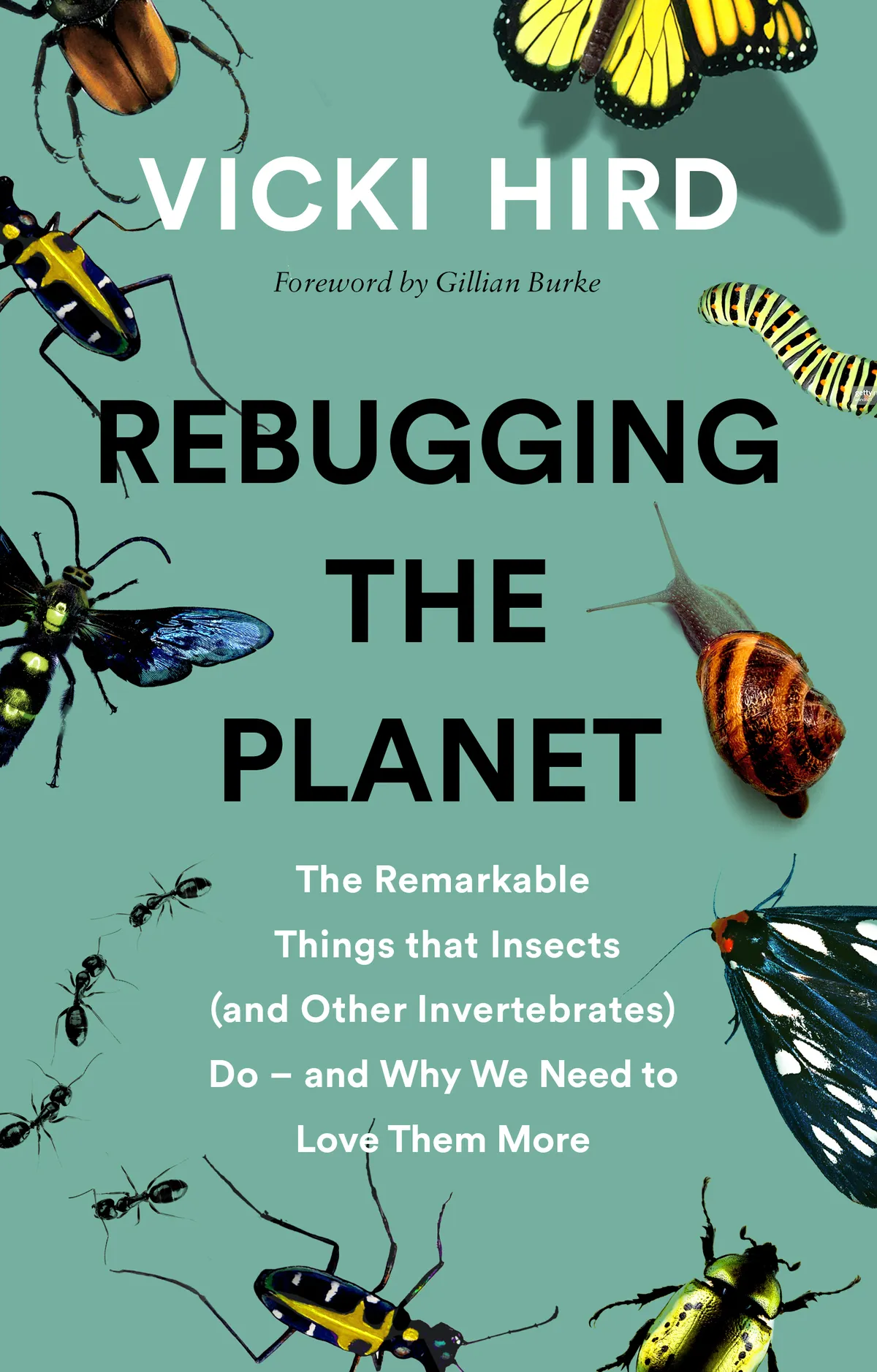
In Rebugging the Planet, entomologist and bug-fanatic Vicki Hird delves into the fascinating world of little critters. This is a book celebrating life on the small scale and why it’s vital to our very existence. Written with non-technical vocabulary, Vicki seeks to reconnect us to the creepy crawlies around us by highlighting some fascinating star species throughout the book.
Speaking in engaging and understandable language, she makes the case for a rethink of our attitudes when it comes to ‘bugs’. From their role in the food chain, to their amazing biology, insects and invertebrates are discussed in a positive light often lacking in literature. For once, this hugely diverse and complex group of organisms doesn’t sit in the shadow of animals with backbones. Vicki’s argument for a world crawling with insects and a society connected more intimately to invertebrate life is a compelling one. This is an ideal read for the slightly-bug-squeamish folks in your life!
Reviewed by Lucy Hodson, nature communicator
Silent Earth
By Dave Goulson. Published by Vintage Publishing, £20.00.
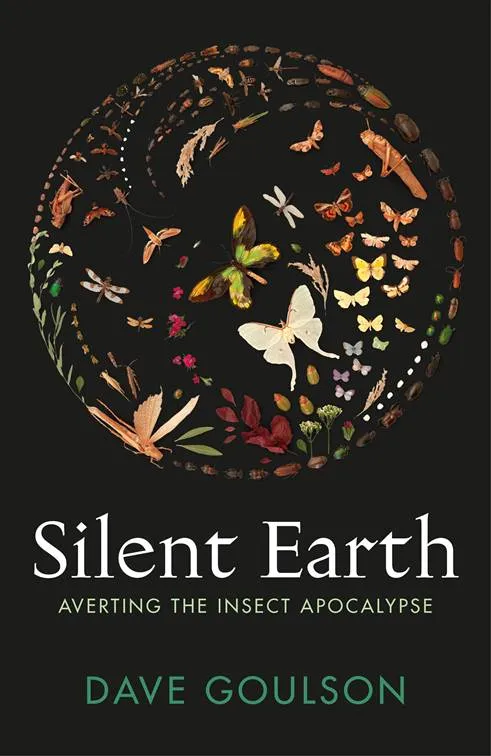
Goulson strikes again with another excellent book. Based on the title, there’s a fear that it’s doom and gloom. Which it is, but it also so much more than that. It reveals why we should love and respect insects – not just those that are pretty, like the butterflies, moths and bees.
Whilst the book lays out the problems with insecticides, habitat loss and shifting baselines, it also looks ahead to the future where we can live in a greener and cleaner future if we take action to save our insects.
From the small steps such as mowing your lawn less and making your garden a pesticide-free zone, to more widescale measures in transforming our food systems and what we eat, supporting large-scale rewilding projects and greater protection for existing natural areas.
Reviewed by Megan Shersby, editorial & digital co-ordinator, BBC Wildlife
A Natural History of Insects in 100 Limericks
By Richard A Jones, illustrated by Calvin Ure-Jones. Published by Pelagic Publishing, £9.99.
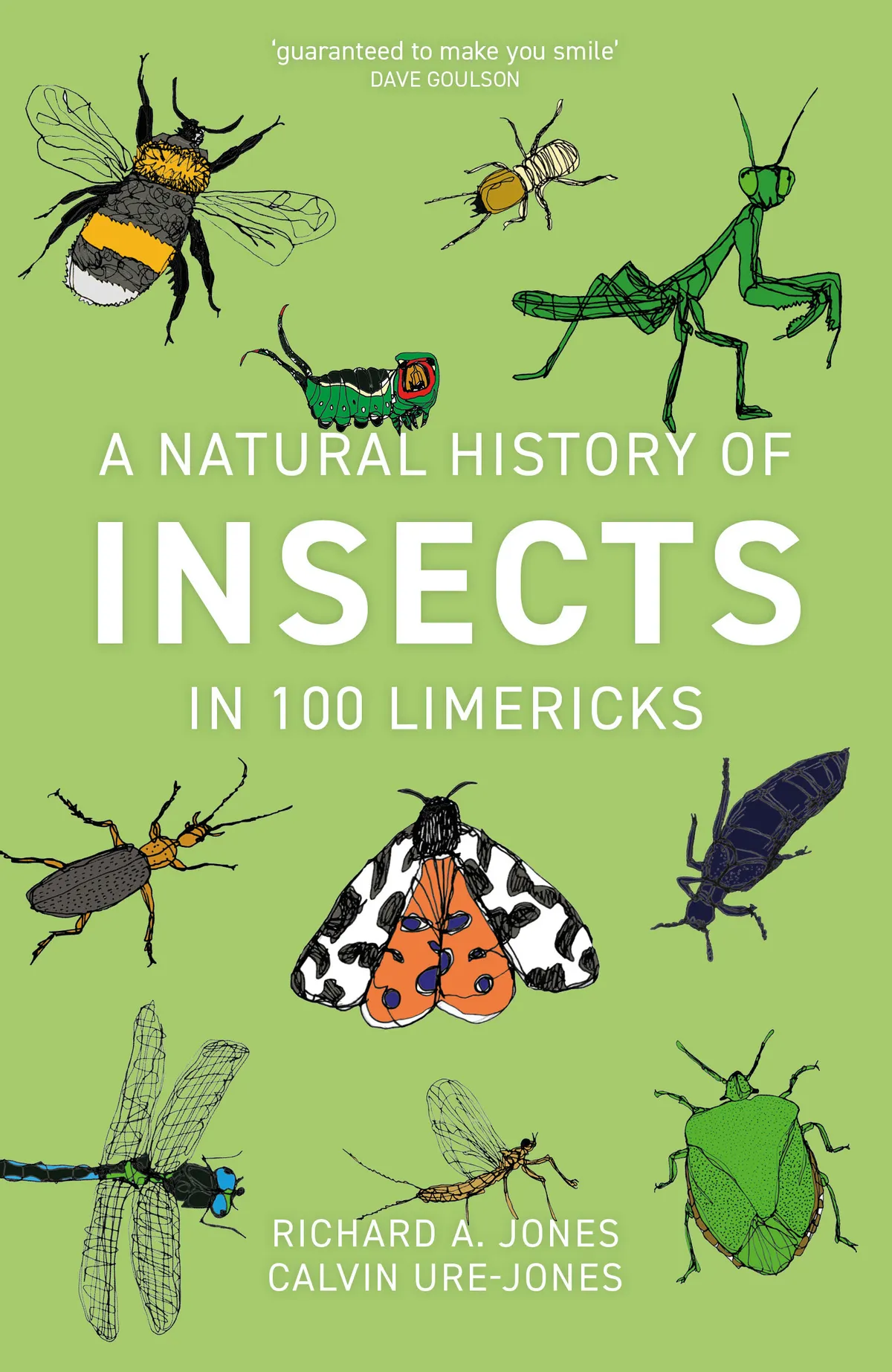
Richard Jones has an almost childlike love of bugs and has previously combined this with an adult’s knowledge in producing excellent popular science tomes on them. In A Natural History of Insects in 100 Limericks – a lyrical snapshot of some of insects found on this planet - his inner child is in charge judging by some of the silliness of the poems.
But the adult is present, adding information on each chosen insect, often with unusual fact to help us learn more about these mini megastars and why insects are worthy of conserving – for example lacewings eggs are individually separated from each other prevent cannibalism, that is rather extreme rivalry amongst the offspring!
The limericks are illustrated by the clever but simple line drawings of his son, Calvin Ure-jones, whose playful style mimics that of the poems and the overall result is an informative book on insects interwoven with some utterly nonsensical rhymes.
Reviewed by Dr Erica McAlister, entomologist
Aliens Among Us
By Daniel Kariko. Published by Liveright, £14.99.
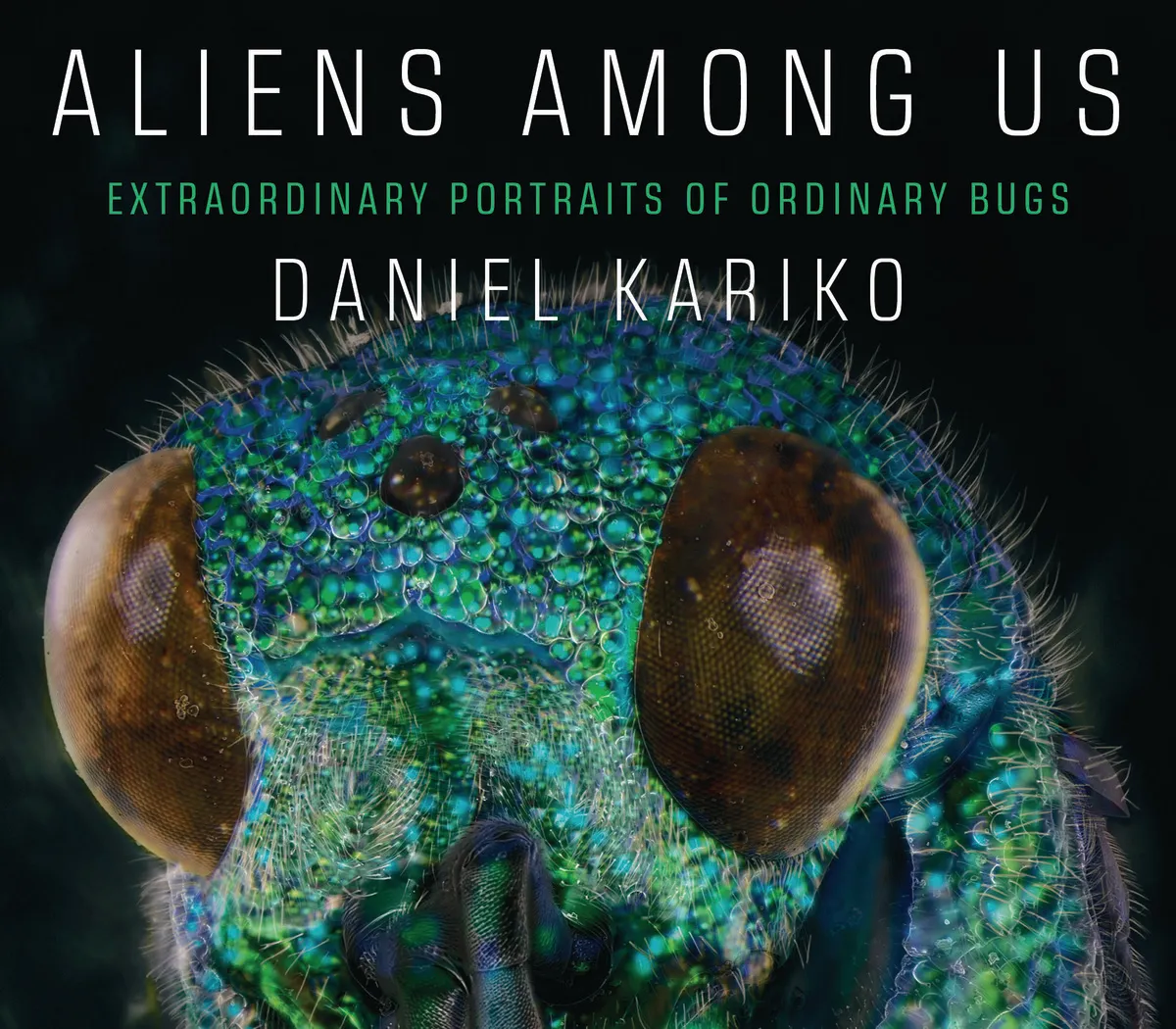
Kariko draws on different areas of interest – from historical natural science collections to Renaissance and Baroque painters – to bring us images of invertebrates as we’ve never seen them before.

Using microscope imaging techniques, he carefully creates captivatingly detailed and beautiful portraits of common invertebrate species that he finds during his daily routines in North Carolina. The results can only be described as works of art.
Reviewed by Victoria Hillman, wildlife photographer
Extraordinary Insects
By Anne Sverdrup-Thygeson. Published by Harper Collins, £14.99.
Buy now from:
- Amazon UK (hardback), Amazon UK (paperback)
- Bookshop (paperback)
- Hive (paperback)
- Waterstones (hardback), Waterstones (paperback)

The fascinating world of insects is opened up to us in this delightful book by Sverdrup-Thrygeson, a professor of conservation and insect ecology. Find out why insects are so successful as an animal group and uncover their vitally important work in cleaning up after others.
A particularly excellent chapter discusses how various insects have inspired engineers, designers and scientists – leaf-cutter ants and their cultivated fungi have given us new antibiotics, and a colour- changing Indonesian beetle is helping to combat the forgery of bank notes. The significant role of insects in the food chain is also covered, including why they are an environmentally friendly option for humans.
Reviewed by Megan Shersby, editorial & digital co-ordinator, BBC Wildlife
Insects and spiders
By Claire Beverley and Dr David Ponsonby. Published by Ivy Press, £12.99.
Buy now from:
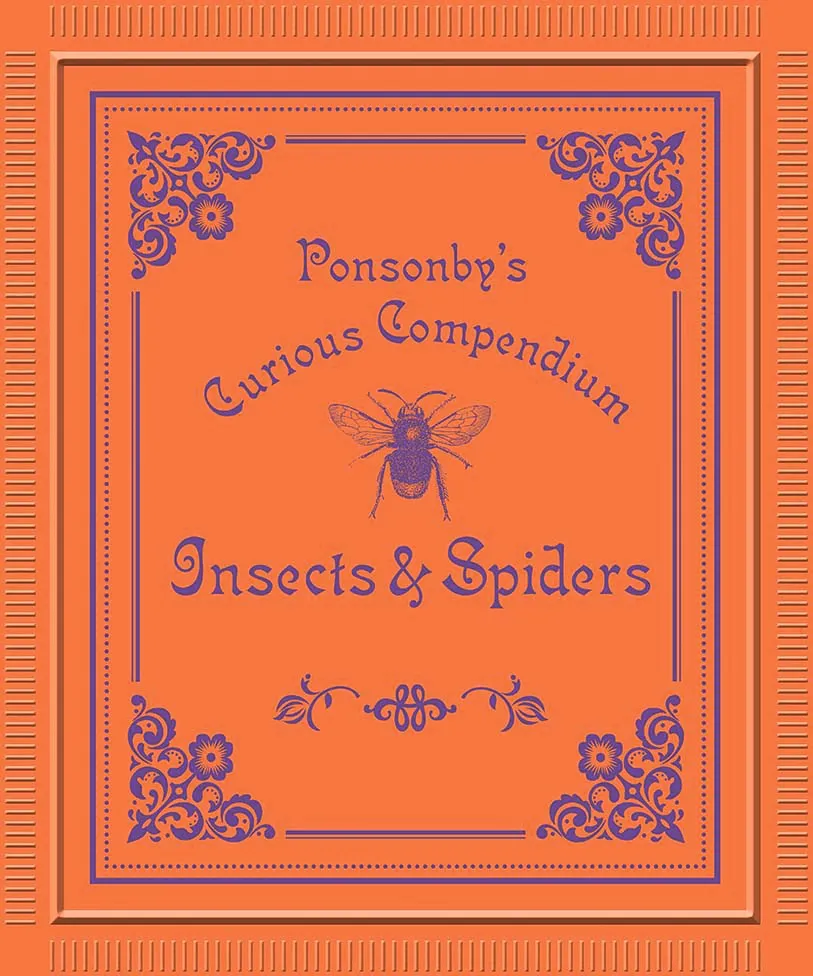
Books that relish nature’s diversity play a dangerous game. Go in too heavy and they risk resembling museum drawers – ranks of endless specimens with too-simple labels. But go in too soft and there’s no depth – and nature, as we know, is nothing if not deep. Thankfully, Ponsonby’s Curious Compendiums are pitched somewhere in the middle. Each double-page spread covers a different taxonomic group, with collective descriptions, warm anecdotes and a host of historical line drawings. The art is exquisite and adds a richness to the titles.
Reviewed by Jules Howard, zoologist
Metamorphosis
By Rupert Soskin. Published by Bloomsbury, £30.00.
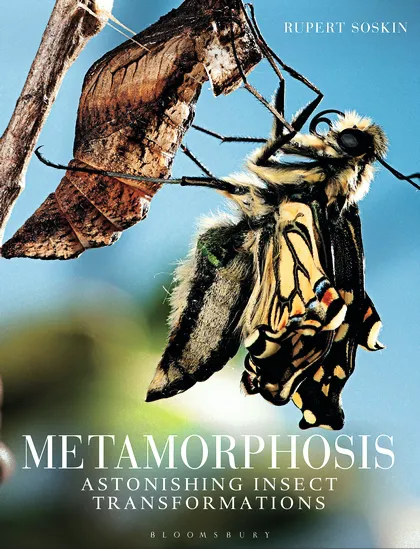
By rights, insects are not flies, beetles and butterflies – these are merely the final few bright moments of a life that really belongs to the maggot, grub and caterpillar.
It is the long-lived larval stage that does most of the eating, and all of the growing, before undergoing, as Rupert Soskin ably shows, the most astonishing transformations. Metamorphosis benefits from personal observations and a clear voice, and the surprises offered up are by turns beautiful (shieldbug nymphs cavort around their pretty eggs) and horrific (parasitoid wasps erupt from a zombie caterpillar) – but always awe-inspiring.
Reviewed by Richard Jones, entomologist
The Sting of the Wild
By Justin O Schmidt. Published by Johns Hopkins University Press, £16.00.
Buy now from:
- Amazon UK (hardback), Amazon UK (paperback)
- Bookshop (hardback), Bookshop (paperback)
- Hive (hardback), Hive (paperback)
- Waterstones (hardback), Waterstones (paperback)

Some insects sting worse than others. Sweat bees tickle like tiny sparks (score 1 on the Schmidt Sting Pain Index), but the bullet ant delivers a venom payload that feels like you’ve been shot (an eye-watering 4).
The arms race that created the stinger hypodermic, and its biochemical warfare toxins, was a direct result of communal nesting, because the greater risk of predation demanded a formidable defensive strategy. This is the evolutionary theme through which the author lovingly interjects his own personal anecdotes.
Reviewed by Richard Jones, entomologist
Call of Nature: The Secret Life of Dung
By Richard Jones. Published by Pelagic, £16.99.
Buy now from:
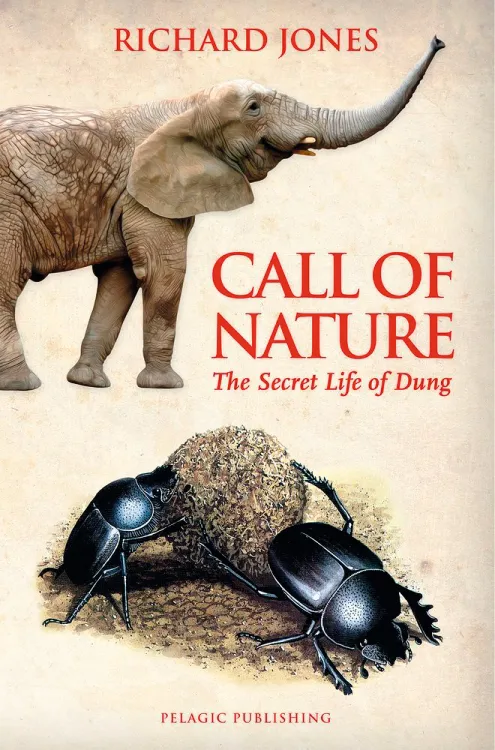
Every cowpat is an island upon which species diversify and exotic behaviours evolve. To invertebrates, each dollop of animal faeces is something to fight over, to steal, to hunt atop or to create nursery grounds within.
In this friendly yet informative look at an under-appreciated ecosystem, Jones skilfully introduces a world of sperm competition and game theory that doesn’t lose sight of the charisma of his vast cast of invertebrates. There is even a field guide for newbie dropping-spotters.
Reviewed by Jules Howard, naturalist
Books on Annelida: worms and leeches
The Book of the Earthworm
By Sally Coulthard. Published by Head of Zeus, £14.99.
Buy now from:
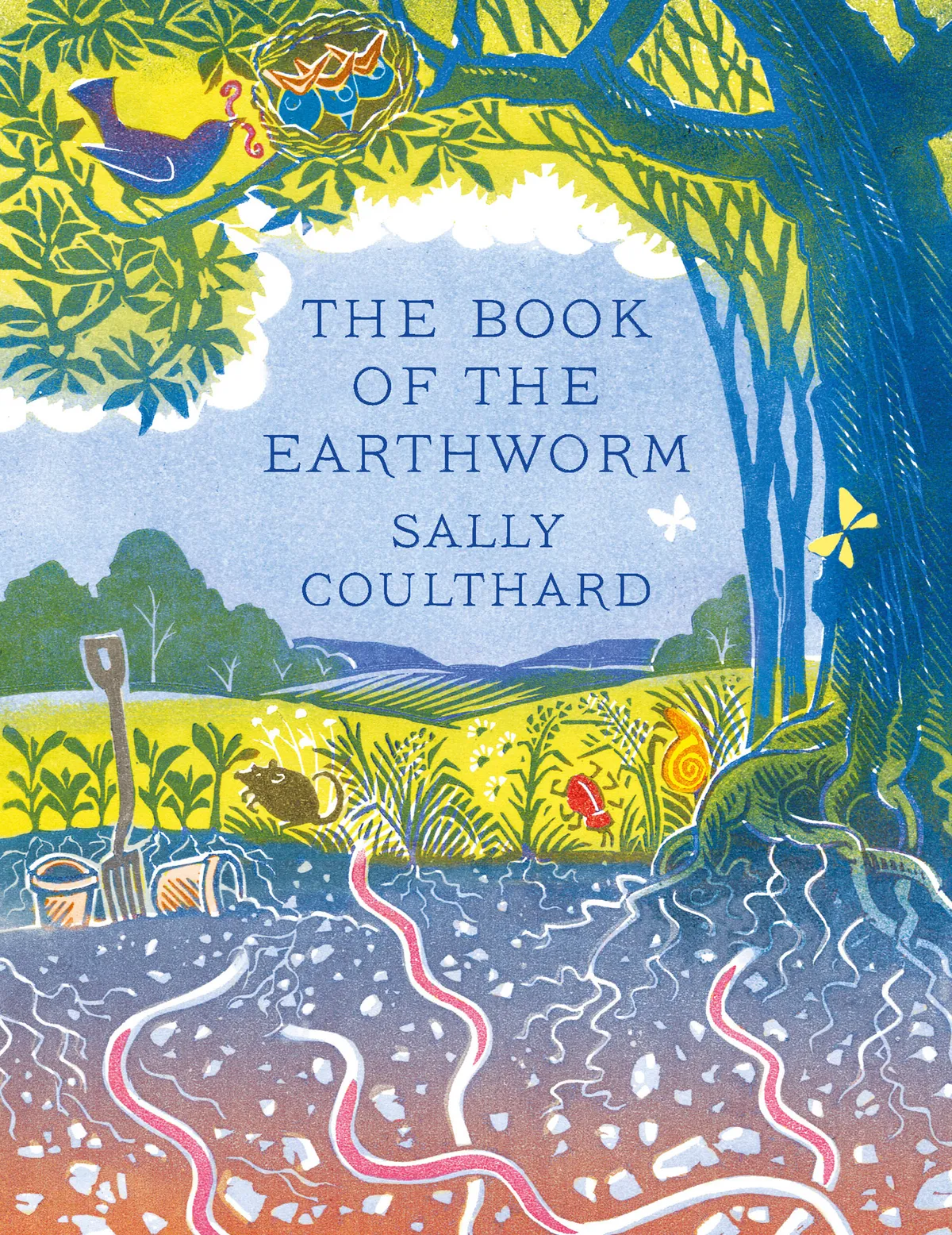
I thought I knew quite a bit about earthworms. Until I picked this charming little book up. It starts with a slightly conflicted statement; an opening gambit stating 'not a lot is known about worms'. Then proceeds to fill the next 138 pages with solid, well researched, quirky, fun and sometimes grave ecological facts.
Covering subjects as diverse as the mysteries of earthworm singing, worms in space, worm moons, worm social lives, herding worms, raining worms, worms and pollution, microplastics and worms and of course whether or not eating them is a good idea! The only thing I couldn't find was a reference to worms as invasive species themselves.
Gorgeously illustrated with chunky black and white woodcuts. This book is a perfectly formed, easily digestible compendium of everything earthworm. Whether you're a gardener, farmer, allotmenteer, compost heap owner or someone who is just fascinated by these little wrigglers and the lives they live.
Reviewed by Nick Baker, TV presenter and naturalist
Books on Odonata: dragonflies and damselflies
Dragonflies & Damselflies: A Natural History
By Dennis Paulson. Published by Ivy Press, £25.00.
Buy now from:

For such familiar creatures, there is so much still to be discovered about dragonflies and damsels: migration over thousands of kilometres of open ocean, the intricacies of sperm competition, and the evolution of the bizarre ‘mating wheel’ formation – all long-term research topics to keep us busy for years. Combine these insights with a representation of species from around the world in the identification guide, and you have a thoroughly entertaining and informative read.
I’m now tempted to head to Hainan to see the phoenix, Pseudolestes mirabilis, which almost uniquely holds its brightly coloured hindwings stationary while using only its front wings to fly. Or maybe it should be Central America to see the blue-winged helicopter, Megaloprepus caerulatus, which has the largest wingspan of any extant species and plucks spiders from their webs. Until then, I’ll just have to keep reading.
Reviewed by Richard Jones, entomologist
Books on Blattodea: cockroaches and termites
Underbug: An Obsessive Tale of Termites and Technology
By Lisa Margonelli. Published by OneWorld, £14.99.
Buy now from:
- Amazon UK (hardback), Amazon UK (paperback)
- Bookshop (hardback), Bookshop (paperback)
- Hive (hardback), Hive (paperback)
- Waterstones (hardback), Waterstones (paperback)
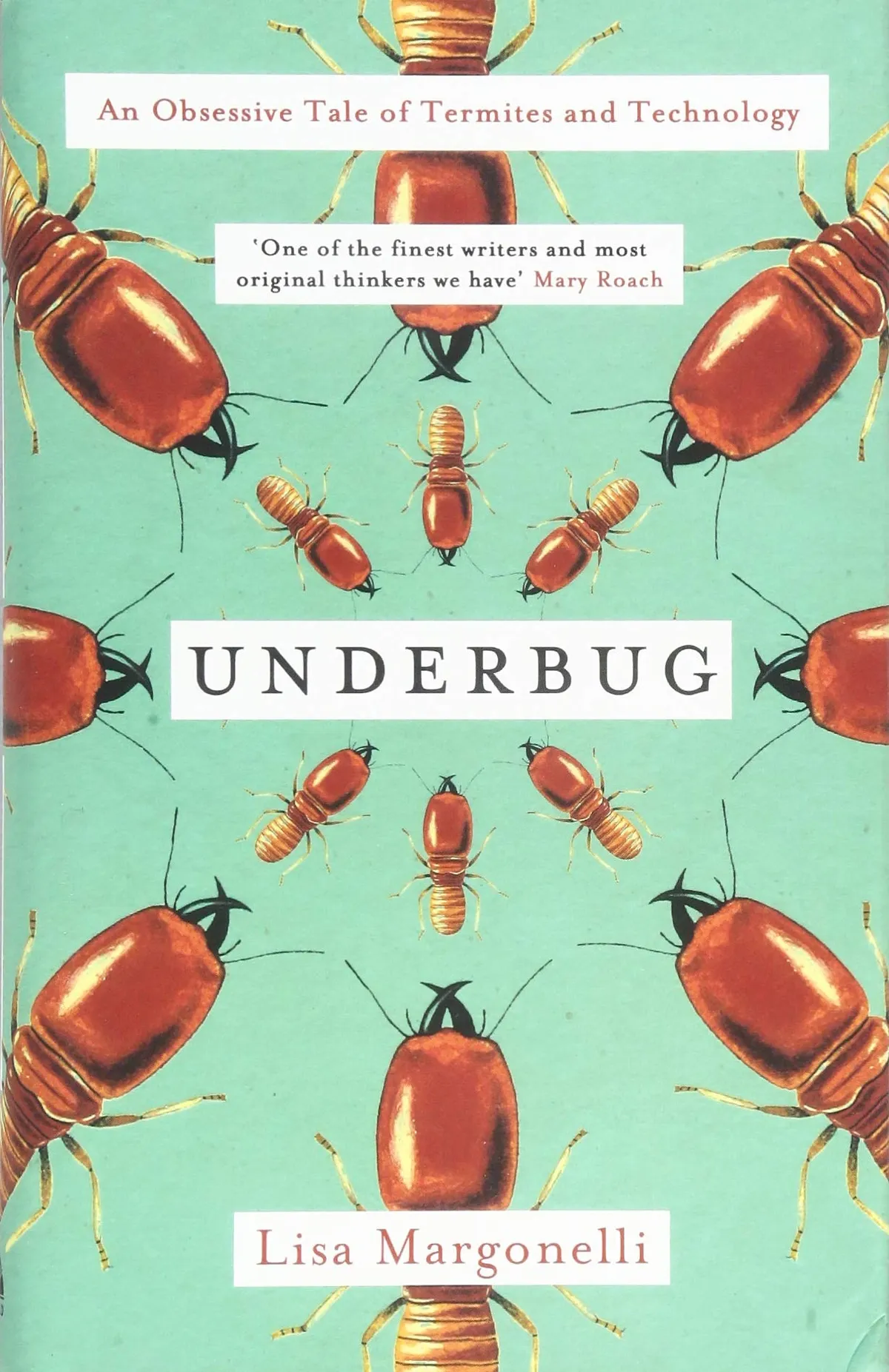
Termites are small, but have grand effects. Their biomass in a tropical forest can match that of Serengeti wildebeest, they construct cities of cement and they digest all cellulose, from trees to
cowpats.
But this book explores more than just their ecology. The boundaries of Margonelli’s interest expand outwards to meet the programmers and roboticists looking to replicate termite building skills that might terraform Mars, and inwards to the geneticists unravelling the insects’ gut biochemistry with a view to creating fuel methane. An eminently readable melange of the termite microcosm.
Reviewed by Richard Jones, entomologist
Books on Hymenoptera: bees, wasps and ants
Empire of Ants
By Susanne Fotizik and Olaf Fritsche. Published by Octopus Publishing Group, £16.99.
Buy now from:

If there is not a collective noun for ants maybe Empire should be as this book entertainingly takes us deep into the societies that many of these (mostly females) form.
From the beginning we learn about vampire ants, with queens feasting off the blood (more technically lymph) of their young, through to swarming navigators across the deserts, and finishing with ants that are so numerous that there is fear for the future of the giant tortoises due to vast numbers killing their offspring and as the authors write ‘infesting their eyes and anuses’. What a way to go!!
This book is written in simple English – the technical terms are kept to a minimum and all the accounts, stories and research are wonderfully described resulting in much amusement and head shaking at the incredible world these ants have built. Pay attention to the ants’ folks, for they appear to truly rule this world.
Reviewed by Dr Erica McAlister, entomologist
The Bee Book
By Fergus Chadwick et al. Published by Dorling Kindersley, £16.99.
Buy now from:

Despite their ubiquity, honeybees remain shrouded in myth and misunderstanding, so it’s reassuring to see this book’s sensible and non-sensationalist statements on colony collapse disorder, Africanised bees and the modest health benefits of royal jelly.
This simple pictorial guide takes readers on a tour from the evolution of bees and pollination, to domestication, the practicalities of beekeeping and recipes using honey. What could be better than reading this in a bath full of honey and lavender soap, lit with beeswax candles?
Reviewed by Richard Jones, entomologist
The Good Bee: A Celebration of Bees - And How to Save Them
By Alison Benjamin and Brian McCallum. Published by Michael O'Mara Books, £9.99.
Buy now from:
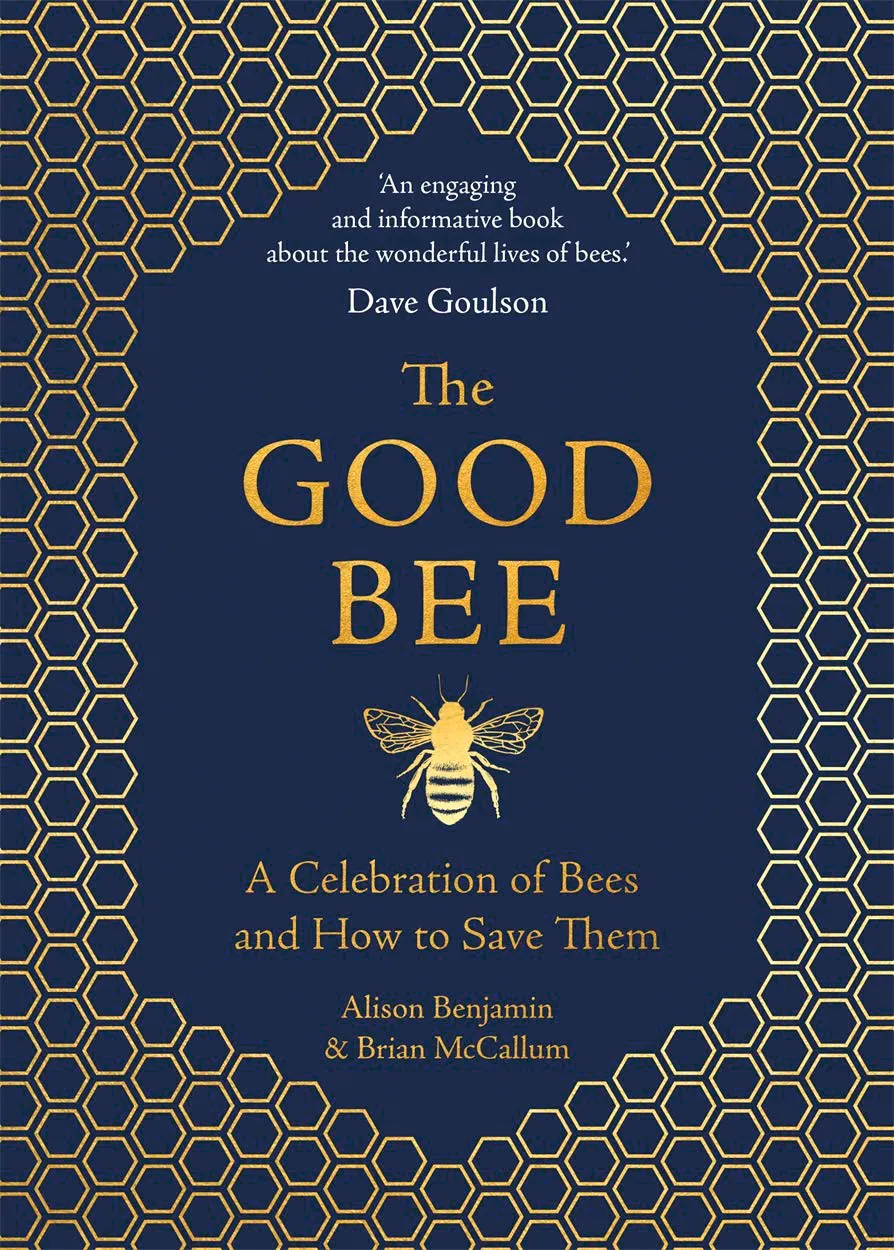
Normally, honeybees get all the limelight, so it is encouraging to find two beekeepers tracing back the ecology of their domesticated charges through the wider world of wild bees and a landscape of flower-insect interactions. From the familiar but misunderstood bumbles of the cold northlands, to the tiny stingless neotropical Melipona, bees and their behaviour are shown as an integral part of a healthy biosphere.
But bees are under threat. A quarter of British bumblebees are 80% down and a third of Europe’s solitary bees are declining. Writing clearly and fervently, the authors’ message is stark: we can only save these animals if we understand them.
Reviewed by Richard Jones, entomologist
The Solitary Bees: Biology, Evolution, Conservation
By Bryan N. Danforth, Robert L. Minckley, and John L. Neff. Published by Princeton University Press, £35.00.
Buy now from:

Whatever you thought you knew about bees is probably wrong. Honeybees and bumbles (only 10% of bees) have monopolised public awareness, leaving solitary species undervalued. Solitary by virtue of each female working alone to build a nest and stock it with enough pollen/nectar cake to rear her precious few (usually 6–35) offspring, the non-social bees are as vulnerable and in need of conservation effort as they are ignored.
Yet their diversity is astounding – from flightless, big-headed males to cuckoo parasitism and underwater nests. This book sometimes uses technical language to discuss complex science, but there is something astonishing on every page.
Reviewed by Richard Jones, entomologist
A Honeybee Heart Has Five Openings
By Helen Jukes. Published by Simon & Schuster, £14.99.
Buy now from:
- Amazon UK (hardback), Amazon UK (paperback)
- Bookshop (hardback), Bookshop (paperback)
- Hive (hardback), Hive (paperback)
- Waterstones (hardback), Waterstones (paperback)

The nature-writing memoir is a well-trodden path, but this story of a year of beginner-level beekeeping is beautifully written and informative. Author Jukes moves from London to Oxford, where she starts a new job (that she hates) and, to effect change in her life, decides to keep honeybees in her back garden.
Embarking on her journey, she obsessively researches the inner workings of the hive, immersing herself in her new wards and sharing what she learns from other beekeeping tomes. A charming, gentle and pleasant story that teaches a lot about honeybees.
Reviewed by Kate Bradbury, wildlife gardener and author
Bee Quest
By Dave Goulson. Published by Jonathan Cape, £16.99.
Buy now from:
- Amazon UK (hardback), Amazon UK (paperback)
- Bookshop (paperback)
- Hive (paperback)
- Waterstones (hardback), Waterstones (paperback)
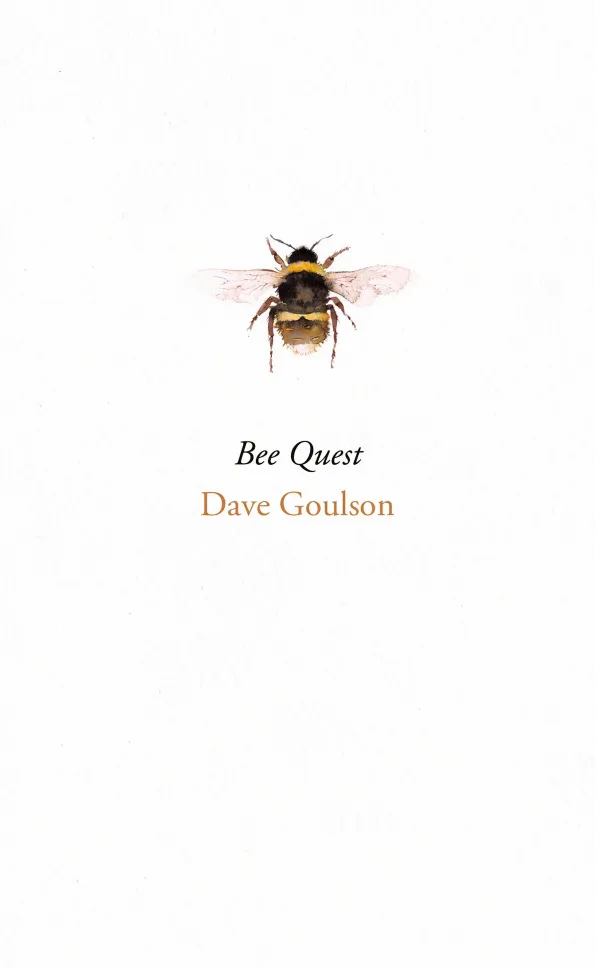
Dave Goulson’s entertaining fifth book relates his mission to find the planet’s most elusive bees. Starting with a childhood spent outdoors, he takes us via Salisbury Plain and the Hebrides on to Poland, Argentina, Ecuador and western USA, before returning to the brownfield wildlife oases of the Thames Gateway and the rewilded Knepp Castle Estate.
Packed with furry golden nuggets guaranteed to fascinate, Goulson’s amiable prose builds to the inescapable conclusion that only enhanced effort will ensure that our planet is safe for non-humans.
Reviewed by Matt Shardlow, chief executive, Buglife
More Than Honey
By Markus Imhoof and Claus-Peter Lieckfeld. Published by Greystone Books, £13.99.
Buy now from:

Do we really need another book about the pollinator apocalypse? Thankfully More Than Honey, based on a documentary, is rather more upbeat about the future of Apis mellifera – there are now more clues to the mysterious affliction known since 2006 as colony collapse disorder (CCD), as well as to possible solutions.
Varroa mites and neonicotinoid sprays beleaguer western honeybees, but genetic input from Africanised bees offers hope. Industrialisation has backed honeybees into a dark corner of the hive. But books
like this, lifting the lid, hopefully shed some light.
Reviewed by Richard Jones, entomologist
The Bee Bible
By Sally Coulthard. Published by Head of Zeus, £10.00.
Buy now from:
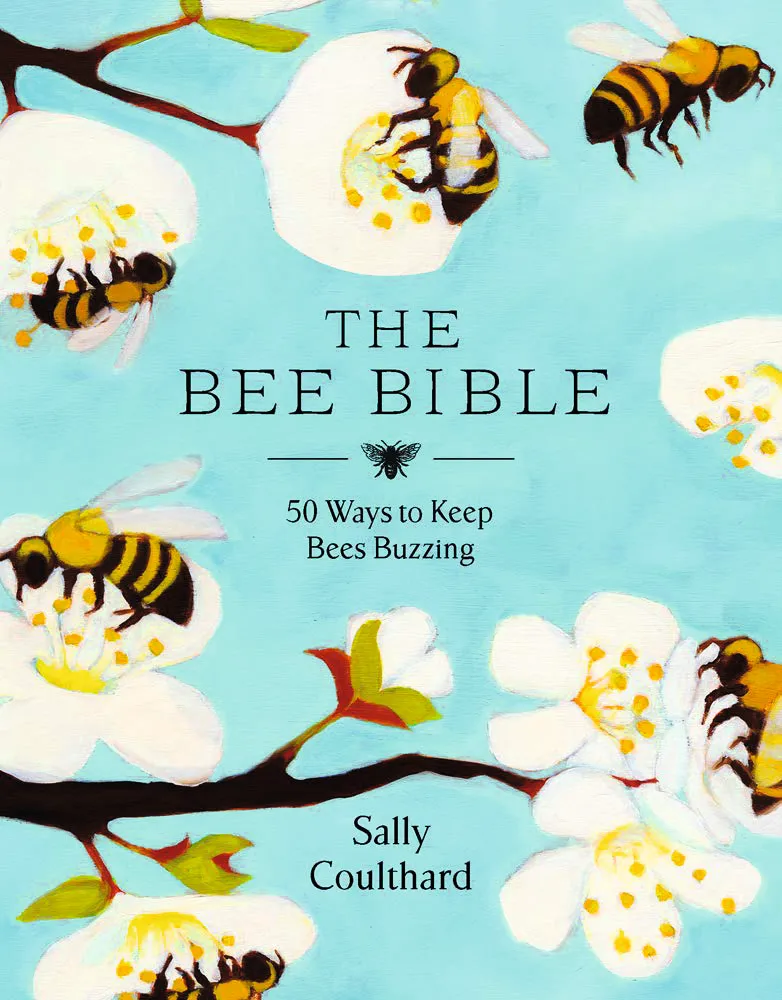
My heart sank when I saw the cover, which is (albeit beautifully) illustrated by a painting of honeybees visiting spring blossom. Was this going to be yet another hastily assembled bee book that deals with only one of Britain’s 267 species? Happily, my fears were unfounded. While the honeybee features heavily in the book, Coulthard mentions its bumblebee and solitary bee cousins almost as frequently.
Packed with information and easy to follow, The Bee Bible is perfect for beginners who want to understand why bees are declining, and how we can help them. Coulthard covers everything from ditching pesticides and changing food choices to making a solitary bee nestbox.
Reviewed by Kate Bradbury, wildlife gardener and author
Books on Coleoptera: beetles
Beetles
By Richard Jones. Published by Collins New Naturalist, £65.00.
Buy now from:
- Amazon UK (hardback), Amazon UK (paperback)
- Bookshop (hardback), Bookshop (paperback)
- Hive (hardback), Hive (paperback)
- Waterstones (hardback), Waterstones (paperback)
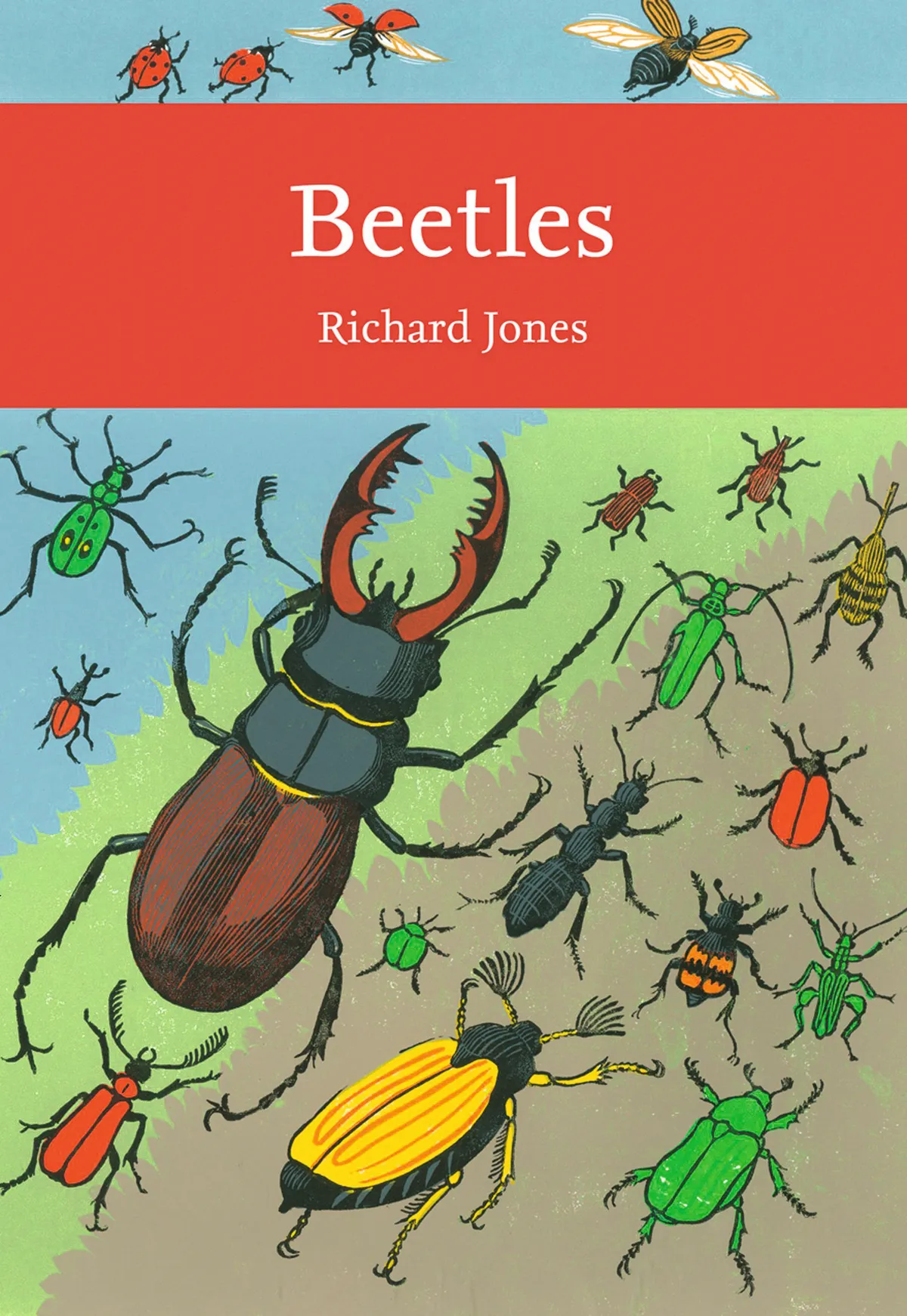
“There are more types of beetle on this planet than any other group of creatures,” says author Richard Jones. Writing a monograph on the topic is a challenge that the entomologist has risen to superbly. As well as a global overview, Beetles includes a handy guide to 102 British beetle families and a simple key to the most common, making it appeal to both beginners and experts.
The chapter on the significance of beetles to humans is particularly fascinating, featuring scarab beetles in ancient Egypt and ladybirds in nursery rhymes.
Reviewed by Megan Shersby, editorial & digital co-ordinator, BBC Wildlife
Beetle
By Adam Dodd. Published by Reaktion, £12.95.
Buy now from:
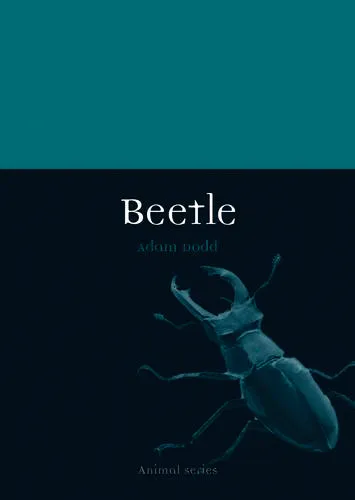
Everyone loves beetles. Despite the famine-triggering behaviour of the Colorado beetle and the grain weevil, and the real prospect of deathwatch bringing the roof down, beetles are non-threatening – they don’t sting or bite. Their biology fascinated Darwin, while their beauty inspired the 16th- century painter Albrecht Dürer.
During this unravelling of the human–beetle relationship, Adam Dodd is not surprised that beetles are regarded as cute. How else can we account for our fascination with sacred scarabs, the Fab Four and the best-selling saloon car?
Reviewed by Richard Jones, entomologist
A Natural History of Ladybird Beetles
By Michael Majerus. Published by Cambridge University Press, £47.99.
Buy now from:

Ladybirds are fun – we all love them. But, as this book shows, they are also serious, and with the recent arrival (2004 is only yesterday in terms of island biogeography) of the invasive harlequin, loyalties are tested.
The detail here is immense – we now know a lot about the genetics, ecology, behaviour and distribution of these colourful beetles – but a coherent picture emerges of why they are so brazenly familiar (unlike their other more secretive beetle brethren).
It’s also enlightening. Research reveals, for instance, that captive birds, who can afford to be fussy, will reject these distasteful beetles, yet their wild, hungrier counterparts eat a lot of them during winter.
Majerus was taken from us too early, aged just 55, but this book stands as a tribute to his work – to make ladybirds fascinating and fun.
Reviewed by Richard Jones, entomologist
Books on Lepidoptera: butterflies and moths
Much Ado About Mothing
By James Lowen. Published by Bloomsbury, £18.99.
Preorder now from:
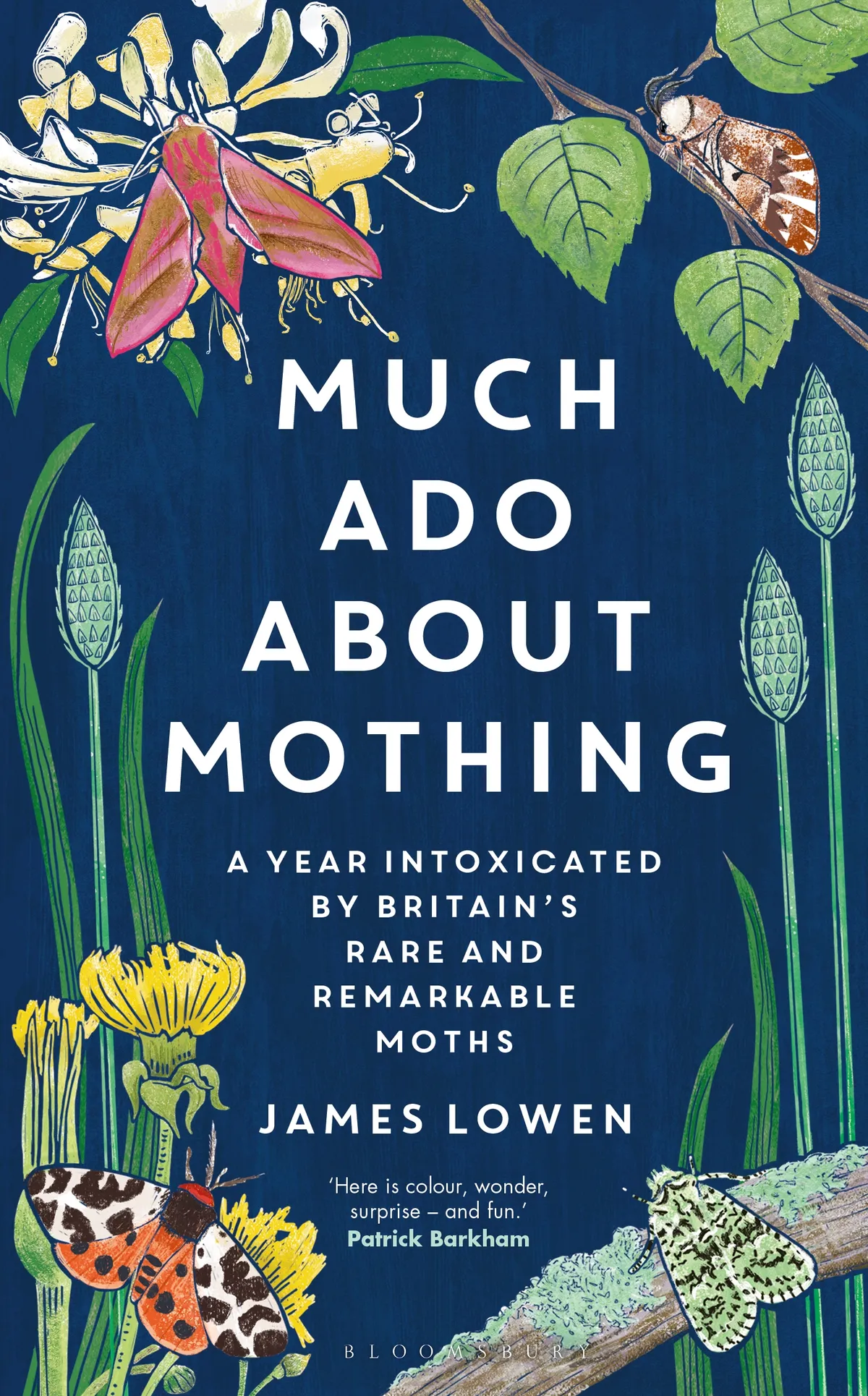
In 2019 James Lowen undertook a quest to see the rarest and most remarkable moths in Britain. Travelling across fens and along cliff-tops, from Cornwall to the Scottish Highlands, Lowen guides us through his year of moths, accompanied by a merry band of moth-ers.
This journey introduces the reader to many astonishing species, and I was impressed that he tackles a number of micro moths too. Along the way we meet a broad range of people that share his passion for recording and conserving moths, including Lowen’s young daughter who is utterly enchanted by them. The sense of community really shines through.
In Lowen’s words “Moths are just butterflies with bad PR”. This book seeks to rectify that – and is, indeed, rather good PR for moths. A thoroughly enjoyable read.
Reviewed by Ashleigh Whiffin, entomologist
Butterflies
By Martin Warren. Published by Bloomsbury, £35.00.
Buy now from:

The book we butterfly lovers have all been waiting for to fill a gap between our atlases and field guides. This unique natural history delves into the extraordinary lives of Lepidoptera like no other. Martin’s tone is accessible and informed as he explores each subject – covering everything from the aerodynamics of butterfly flight to the macabre world of parasitoids.
Later chapters shine with passion and offer sound practical advice on finding the different life stages, managing habitats and why conserving butterflies is of such importance. The science is slick and the photographs beautiful. Suitable for the new butterfly enthusiast and seasoned recorder alike - this collection of facts and personal anecdotes is inspiring to read.
Martin set out to write the book he wished he had when first embarking on his own butterfly journey. I’ve no doubt that generations of lepidopterists to come will be grateful for his efforts.
Reviewed by Apithanny Bourne, entomologist
The Disappearance of Butterflies
By Josef Reichholf. Published by Polity Press. £25.00.
Buy now from:

The beauty, individuality and unique characteristics of butterflies and moths are brought to life in the first half of this authoritative book. The pages filled with a lifetime of personal experiences, scientific research and case studies.
But it is the second half that really captured my imagination. Addressing the devastating decline of lepidoptera, Reichholf outlines why this should matter to us and what we can do about it. With striking insight into why over fertilisation, industrial agriculture and habitat degradation are crippling for biodiversity, the author offers hope through a range of solutions. Greening our cities, saying ‘no’ to the mow and rethinking our approach to land management are just some of the answers within our grasp.
It's clear that a neat, utilitarian countryside cleansed of wildlife damages the natural systems on which we ultimately rely. Reichholf calls the butterfly’s life cycle a “magical process” and the butterfly itself a “living miracle”. I agree!
Reviewed by Lindsey Chapman, TV presenter
The Last Butterflies
By Nick Haddad. Published by Princeton University Press, £20.00.
Buy now from:
- Amazon UK (hardback), Amazon UK (paperback)
- Bookshop (hardback), Bookshop (paperback)
- Hive (hardback), Hive (paperback)
- Waterstones (hardback), Waterstones (paperback)
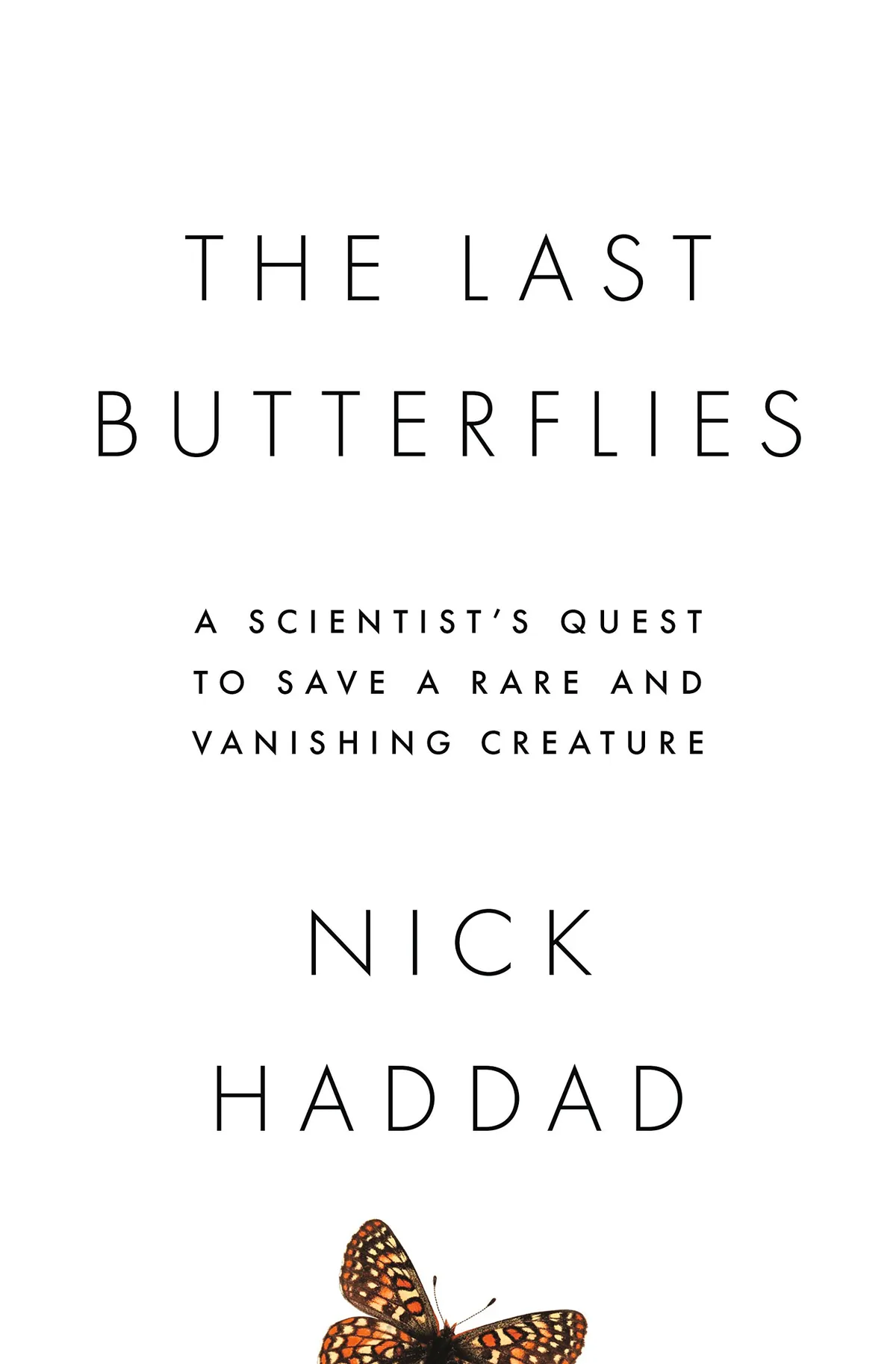
Six rare butterflies, each on the brink of extinction – what would be the lasting impact of their disappearance? Probably nothing, except butterflies are relatively well studied and with each loss comes concomitant loss of myriad less-well-known organisms. Butterflies are the lens through which we can appreciate environmental health or degradation. So far, each species has a recovery tale to tell, but fierce habitat management in the face of climate change and urban encroachment takes a steady nerve.
Haddad eloquently argues that conserving butterflies is not about preserving an organism or habitat in aspic – that way lies stagnation and decline – it’s about enabling a dynamic and resilient environment.
Reviewed by Richard Jones, entomologist
Emperors, Admirals & Chimney Sweepers
By Peter Marren. Published by Little Toller Books, £30.00.
Buy now from:
- Amazon UK (hardback), Amazon UK (paperback)
- Bookshop (hardback), Bookshop (paperback)
- Hive (hardback), Hive (paperback)
- Waterstones (hardback), Waterstones (paperback)
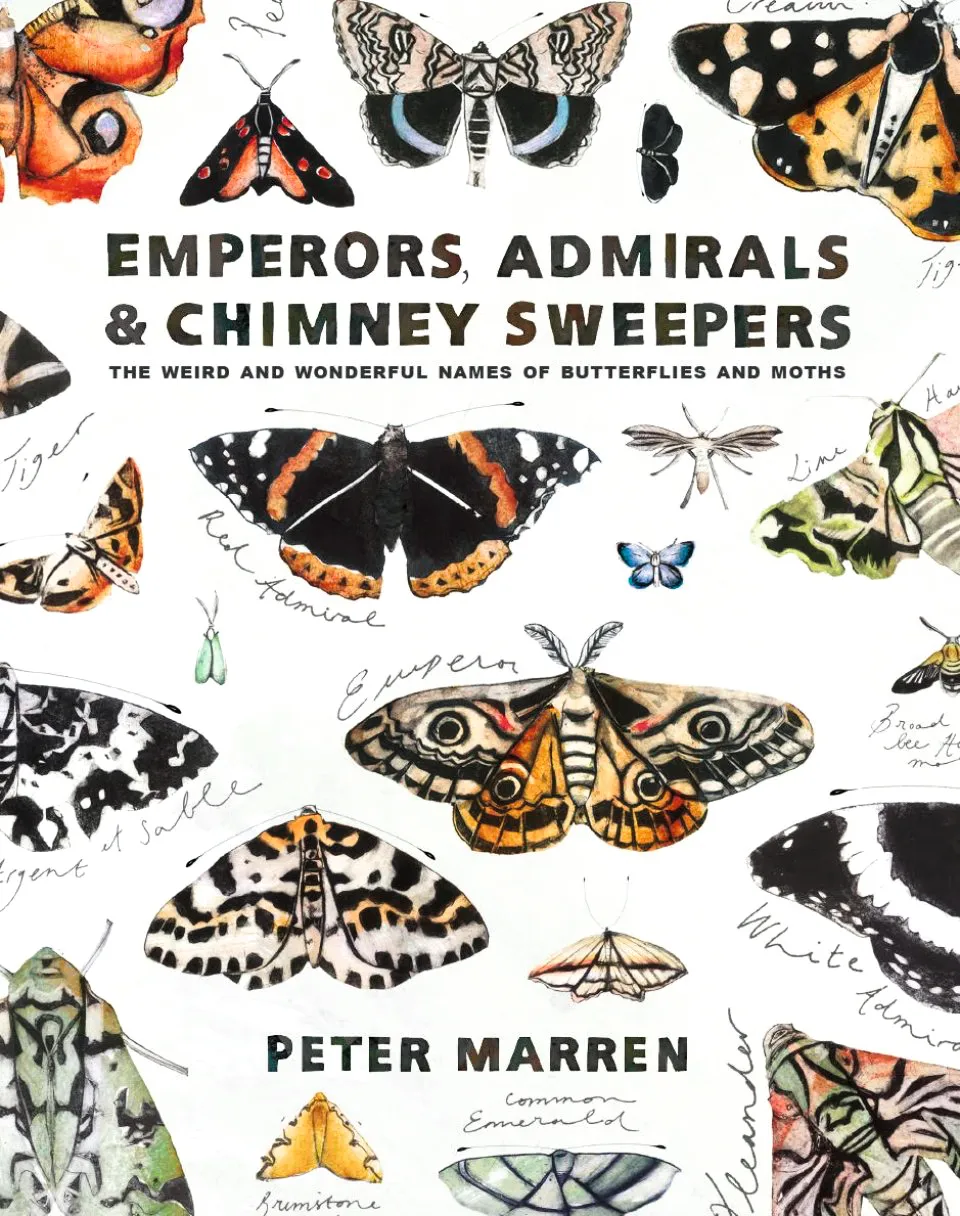
Marren’s latest work will delight both lepidopterists and anyone with an interest in the etymology of the names of species. In this informative book, he explores the history of naming butterflies and moths, including the work of notable natural historians such as John Ray and James Petiver, and wildlife artists such as Maria Sibylla Merian.
It’s full of surprising facts – for example, the Hesperiidae group (now called skippers) were originally called ‘hogs’. The second half of the book is an A-Z of topics that have inspired Lepidopteran names, from admirals and architecture to witches and worms.
Reviewed by Megan Shersby, editorial & digital co-ordinator, BBC Wildlife
The Language of Butterflies
By Wendy Williams. Published by Simon & Schuster, £20.00.
Buy now from:

Wendy Williams delivers a delightful investigation into the world’s obsession with butterflies. Their complex anatomy and ecology are introduced with ease and intrigue – it’s one that will be enjoyed by beginners and butterfly fanatics alike.
The dedicated people that have shaped our understanding of butterflies are as fascinating as the insects themselves. From the pioneering work of Maria Sibylla Merian, to the collectors of the Victorian era, Williams takes us through the history of butterfly research, and introduces some of today’s most passionate scientists. Accounts of declines and extinctions are intertwined with conservation success stories, filling me with hope for the future.
Reviewed by Ashleigh Whiffin, entomologist
In Pursuit of Butterflies: A Fifty-Year Affair
By Matthew Oates. Published by Bloomsbury, £18.99.
Buy now from:
- Amazon UK (hardback), Amazon UK (paperback)
- Bookshop (paperback)
- Hive (paperback)
- Waterstones (hardback), Waterstones (paperback)

This book is an infectious love song to Lepidoptera, in which expert naturalist Matthew Oates shares the sun-splashed memories of his diaries and reveals the many fascinating butterfly habitats of Britain.
Oates is never afraid to show how serious a topic butterflies are. Their appearances and disappearances have mapped the health of our nation's environment through the years and, while the prose if overflowing with cheerful and closely observed detail, it is equally rich with poetry.
In Pursuit of Butterflies will make you want to flit outside in search of these bright grails yourself.
Reviewed by Miriam Darlington, nature writer
His Imperial Majesty: A Natural History of the Purple Emperor
By Matthew Oates. Published by Bloomsbury. £20.00.
Buy now from:
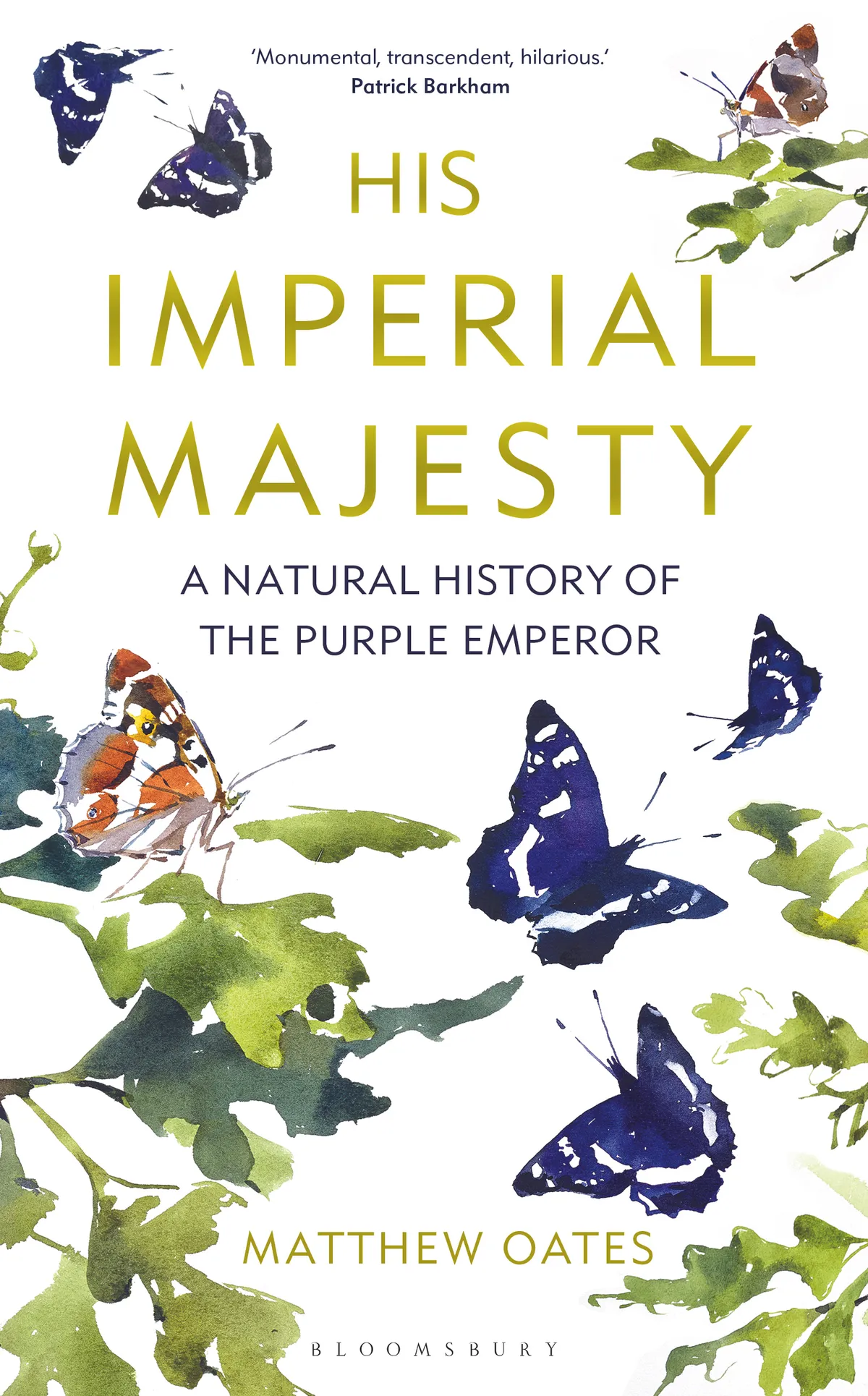
The purple emperor is Britain’s largest butterfly and it once carried a cachet and mystique reserved for mythical creatures. Sightings were fleeting, high above the oak canopy. Known localities were closely guarded secrets. First-hand observations formed a body of arcane lore shared by aficionados who lured it to feed on fresh fox scats or rancid shrimp paste.
But the butterfly’s empire is expanding; rewilding, possibly climate change, and certainly Oates’ zealous half-century of deep ecological study, have shown it to be more widespread, and spreading still. To say Oates is fascinated by the purple emperor is an epic understatement. It is clear from his rich (but not purple) prose that he has been obsessed for 50 years. He now writes with the authority and gravitas of the true doyen, but you can still hear the twinkle in his eye as he pours out his boyhood heart to this wonderful insect.
Reviewed by Richard Jones, entomologist
Rainbow Dust: Three Centuries of Delight in British Butterflies
By Peter Marren. Published by Square Peg, £14.99.
Buy now from:
- Amazon UK (hardback), Amazon UK (paperback)
- Bookshop (paperback)
- Hive (paperback)
- Waterstones (hardback), Waterstones (paperback)

Butterflies have captivated Peter Marren since he netted his first painted lady at the age of five: the insect left a rainbow dust of scales on his fingers. In this beautifully written title we meet the collectors, authors, artists and conservationists who have also been entranced.
We discover how butterflies were named and facts about their cultural history – did you know that the large skipper was once called the cloudy hog?
The book includes a pragmatic assessment of how we're looking after these species now. Whatever you think you know about butterflies, prepare to be surprised and delighted.
Reviewed by Brett Westwood, naturalist and BBC Radio 4 presenter
Monarchs and Milkweed
By Anurag Agrawal. Published by Princeton University Press, £25.00.
Buy now from:

Epic is the only word to describe the annual journey of monarch butterflies. Four generations recolonise North America every year from scratch, then the survivors migrate back, up to 7,500km, to overwinter in their millions in a few clusters of oyamel firs in the Mexican mountains.
Agrawal’s splendid book is no less epic, taking us from heart toxins and sodium pumps to climate change and illegal logging. This is important science about an iconic and sadly declining insect, made readable by enthusiastic, personal prose.
Reviewed by Richard Jones, entomologist
Books on Diptera: flies
The Secret Life of Flies
By Erica McAlister. Published by Natural History Museum, £14.99.
Buy now from:
- Amazon UK (hardback), Amazon UK (paperback)
- Bookshop (hardback), Bookshop (paperback)
- Hive (hardback), Hive (paperback)
- Natural History Museum (paperback)
- Waterstones (hardback), Waterstones (paperback)

That flies have secret lives will come as no surprise. Despite the hoverflies we see perched on flowers, the mosquitoes that vex us in our beds and the craneflies that bumble around our porch lights, most species of the huge and hyperdiverse insect order Diptera are hidden, unnoticed and unfamiliar.
And yet among them are marvels of peculiar form and bizarre behaviour. I would love to find antler flies sparring with their curly facial knobs; or a bat fly ‘swimming’ through the fur of its host; or a giant Texan robberfly feeding on a hummingbird.
Instead, if I can keep up with Erica’s infectious verve, I will vicariously drink down her rich enthusiasm. I’ll need a tough stomach, though. Despite her claim that the furry bumblebee robberfly Laphria flava is her favourite, I can tell that she really has a soft spot for the gut- or flesh-inhabiting maggots of (and these are her words) the “adorably fluffy” botflies.
Reviewed by Richard Jones, entomologist
The Inside Out of Flies
By Erica McAlister. Published by Natural History Museum, £14.99.
Buy now from:
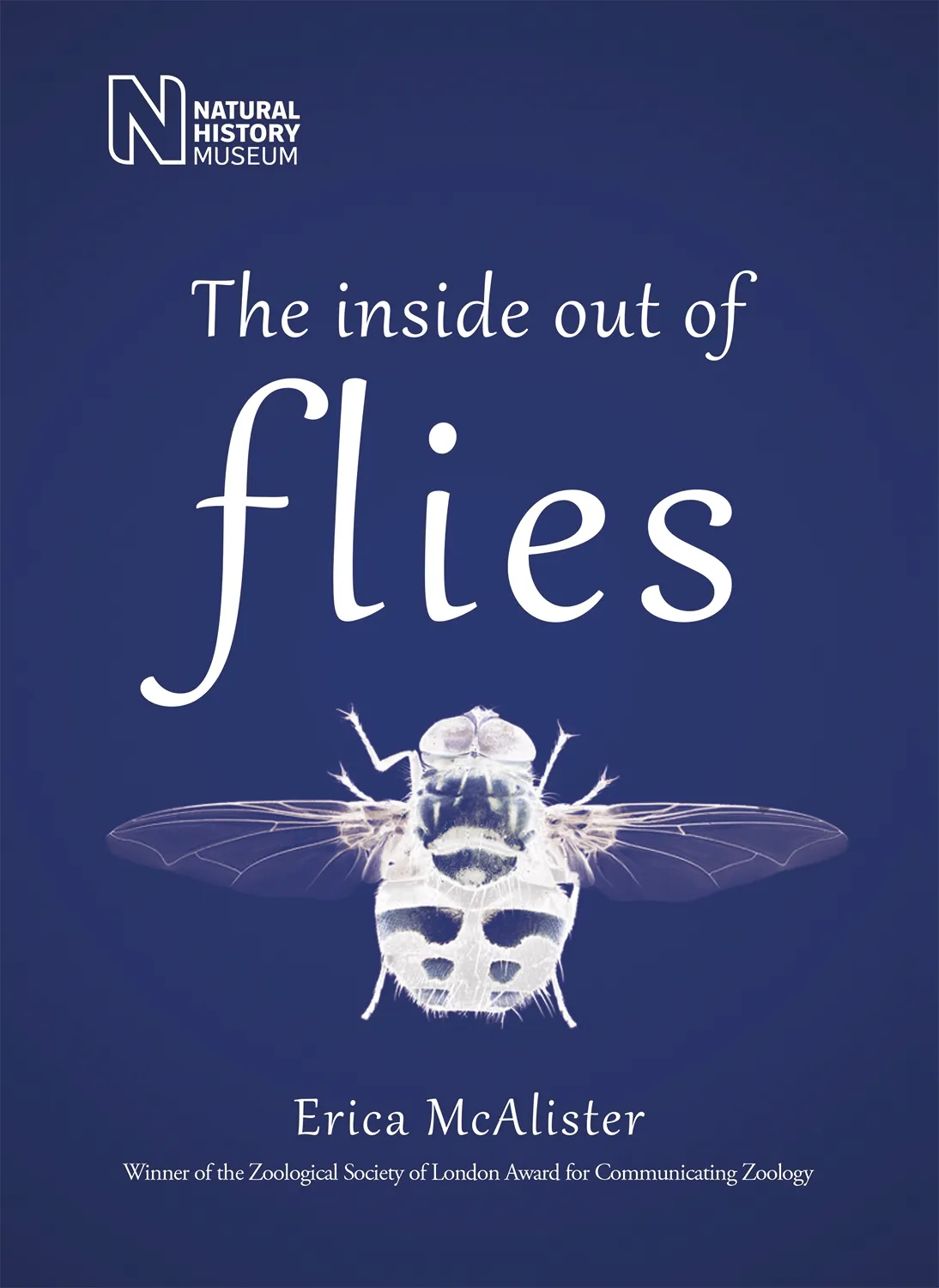
Flies are among the most underrated animals on our planet, but McAlister is on a mission to change that. In this follow-up to The Secret Life of Flies, she provides a closer look at the anatomy of these impressive insects. From blowfly heads with in-built air bags to break through their pupal cases, to the antennae of true fruit flies that enable the males to ‘sing’ and romance a potential mate, it’s their ingenious morphology that makes flies so successful.
Her adoration for flies is utterly infectious and her accessible accounts of cutting-edge research are interspersed with amusing anecdotes that will be sure to induce a giggle.
Reviewed by Ashleigh Whiffin, entomologist
Return to:
- Top of the page
- General insect books
- Books on Odonata: dragonflies and damselflies
- Books on Coleoptera: beetles
- Books on Blattodea: cockroaches and termites
- Books on Hymenoptera: bees, wasps, and ants
- Books on Lepidoptera: butterflies and moths
- Books on Diptera: flies
Main image: © Getty
